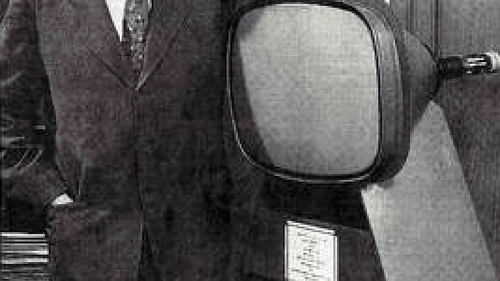Stay in the Loop
BSR publishes on a weekly schedule, with an email newsletter every Wednesday and Thursday morning. There’s no paywall, and subscribing is always free.
When hiring for diversity is the problem
The trouble with film and television diversity initiatives

Is it possible that media diversity initiatives do more harm than good for writers and directors of color? It’s a controversial take, I know, a bit like the age-old debate on affirmative action versus meritocracy. But it’s also a question that’s been bothering me for a while.
When companies allocate resources specifically for diversity hires, we run the risk of tokenizing an entire community of writers and directors. Sure, it's a good way to break into the mainstream, but few people are able to find their way into the more lucrative and influential positions beyond guest-directing an episode or two of a network television series or contributing as one of a half-dozen show writers.
I do not believe in the meritocracy myth. If you’re unfamiliar with this concept, it posits that by hard work and talent alone, historically disenfranchised people can simply pull ourselves out of the circumstances into which institutional racism has thrust us. However, too many of these diversity initiatives are superficial Band-Aids for a system rotten with institutional racism, misogyny, homophobia, and xenophobia.
The bucks stop here
A recent episode of the Whiting Wongs podcast hosted by showrunner Dan Harmon (Community) and animator Jessica Gao (Rick and Morty), provides an insider perspective on the failings of diverse TV-writer initiatives. Recently, to incentivize diversity hiring, networks have provided an extra budget-line item for one staff writer of color. This frees up the showrunner to use funds that would otherwise go toward the new writer's salary on something else.

It’s a great program on the surface, but because the budget only covers a writing room’s lowest-paid position, showrunners are discouraged from promoting recipients to positions where they might exert real control over the writing process. Similarly, of the many network initiatives geared toward putting directors of color in the pipeline, few recipients go on to helm their own TV series.
This next statement may seem somewhat hypocritical, but I still recommend these kinds of initiatives to artists of color. Sadly, they’re the best opportunity many will have to reach the next level in this industry. Aside from a handful of projects marketed as “ethnic shows” (Black-ish, Fresh Off the Boat, Empire) the mainstream media landscape lacks diversity beyond independent community-centric movements. These are best exemplified by the many diverse community-specific film festival circuits. Locally, if we saw ourselves better represented at the Philadelphia Film Festival, perhaps the city wouldn’t also be home to the Philadelphia Asian-American, BlackStar, Latino, qFLIX, Women's, and Mustard Seed South Asian film festivals.
A "majority-minority" city
Each of us came to this career from a different path, but our goals are similar. We want to see ourselves and our communities' stories represented onscreen from an authentic and relatable perspective. Alas, the film exhibition sector, like most industries, operates on a cost-benefit ratio. Until we can demonstrate a marketable draw from communities of color and other historically marginalized peoples, there is little chance that mainstream film festivals or art-house cinema programmers will take us seriously.
In the Asian-American community, historically we have not done a great job of supporting our own artists. This is what happens when society equates whiteness with standard of quality, an equation that diversity initiatives uphold. By making diversity hires an exception to the norm rather than part of a writing room that reflects the true diversity of our society, we perpetuate the myth that whiteness should be the default.

Look at Philadelphia’s diversity — it’s a majority-minority city — and compare it to our established arts and culture institutions. Do the major arts, theater, and film institutions match its diversity in their programming or leadership? Also, which of these institutions are funded by public funds and major foundation grants? Is there a correlation between historically underrepresented artist communities not receiving funding because they are perceived as possessing less artistic merit, or is this just a coincidence?
In the next decade, communities of color will reach a critical mass in the marketplace, but for producers and programmers stuck in the old model of lowest-common-denominator entertainment, it will likely be too late. Consider television inventor Allen B. DuMont, whose TV network went out of business after failing to adapt to modern advances in programming. It is just a matter of time until smaller, more agile content producers and exhibitors who see the value in presenting broader content corner the market.
I have a problem with the concept of diversity and inclusion because that suggests we should simply incorporate diverse (nonwhite, queer, female) voices into majority (white, straight, male) settings. Instead, let's strive to normalize diverse voices within the myriad perspectives and lived experiences our media is meant to represent. Next time you watch a Hollywood film or network TV show, pay attention to the characters onscreen. Do they represent the true diversity of our society? If not, I hope it bothers you.
Sign up for our newsletter
All of the week's new articles, all in one place. Sign up for the free weekly BSR newsletters, and don't miss a conversation.
 Rob Buscher
Rob Buscher